Solar eclipse of March 28, 1922
An annular solar eclipse occurred on March 28, 1922. A solar eclipse occurs when the Moon passes between Earth and the Sun, thereby totally or partly obscuring the image of the Sun for a viewer on Earth. An annular solar eclipse occurs when the Moon's apparent diameter is smaller than the Sun's, blocking most of the Sun's light and causing the Sun to look like an annulus (ring). An annular eclipse appears as a partial eclipse over a region of the Earth thousands of kilometres wide. Annularity was visible from Peru, Brazil, French West Africa (parts now belonging to Senegal, Mauritania and Mali), British Gambia (today's Gambia) including capital Banjul, French Algeria (today's Algeria), Italian Libya (today's Libya), Egypt, Kingdom of Hejaz and Sultanate of Nejd (now belonging to Saudi Arabia), and British Kuwait.
| Solar eclipse of March 28, 1922 | |
|---|---|
 Map | |
| Type of eclipse | |
| Nature | Annular |
| Gamma | 0.1711 |
| Magnitude | 0.9381 |
| Maximum eclipse | |
| Duration | 470 sec (7 m 50 s) |
| Coordinates | 12.3°N 18°W |
| Max. width of band | 233 km (145 mi) |
| Times (UTC) | |
| Greatest eclipse | 13:05:26 |
| References | |
| Saros | 128 (53 of 73) |
| Catalog # (SE5000) | 9332 |
Related eclipses
Solar eclipses 1921–1924
This eclipse is a member of a semester series. An eclipse in a semester series of solar eclipses repeats approximately every 177 days and 4 hours (a semester) at alternating nodes of the Moon's orbit.[1]
| Solar eclipse series sets from 1921–1924 | ||||
|---|---|---|---|---|
| Descending node | Ascending node | |||
| 118 | April 8, 1921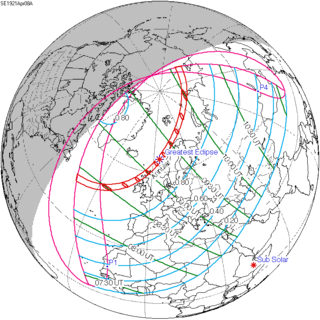 Annular |
123 | October 1, 1921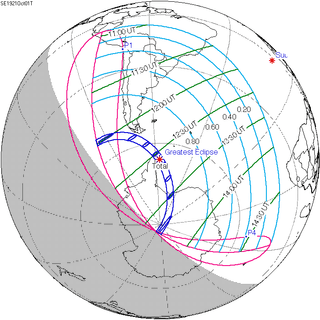 Total | |
| 128 | March 28, 1922 Annular |
133 | September 21, 1922 Total | |
| 138 | March 17, 1923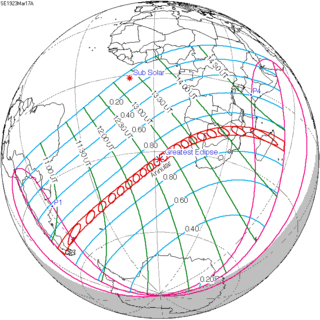 Annular |
143 | September 10, 1923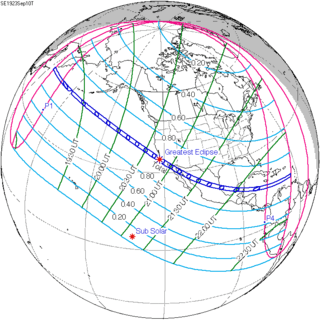 Total | |
| 148 | March 5, 1924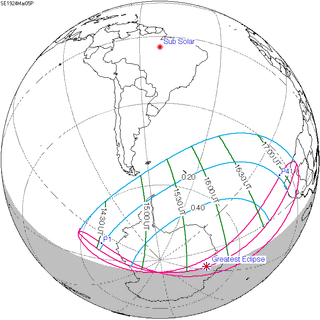 Partial |
153 | August 30, 1924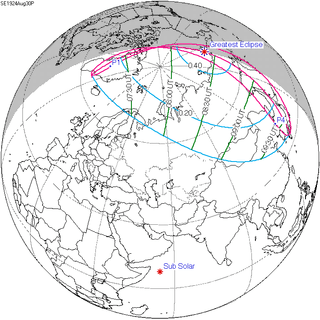 Partial | |
Saros 128
This eclipse is a member of the Solar Saros cycle 128, which includes 73 eclipses occurring in intervals of 18 years and 11 days. The series started with partial solar eclipse on August 29, 984 AD. From May 16, 1417 through June 18, 1471 the series produced total solar eclipses, followed by hybrid solar eclipses from June 28, 1489 through July 31, 1543, and annular solar eclipses from August 11, 1561 through July 25, 2120. The series ends at member 73 as a partial eclipse on November 1, 2282. All eclipses in this series occurs at the Moon’s descending node.
| Series members 52–68 occur between 1901 and 2200 | ||
|---|---|---|
| 52 | 53 | 54 |
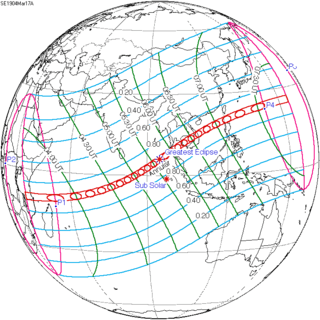 March 17, 1904 |
 March 28, 1922 |
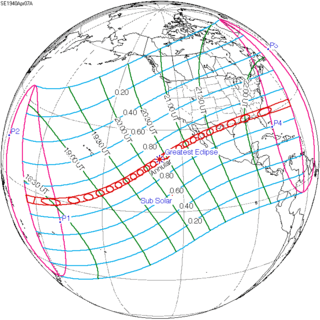 April 7, 1940 |
| 55 | 56 | 57 |
 April 19, 1958 |
 April 29, 1976 |
 May 10, 1994 |
| 58 | 59 | 60 |
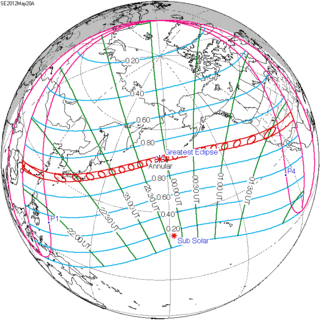 May 20, 2012 |
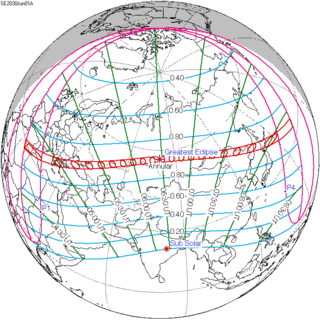 June 1, 2030 |
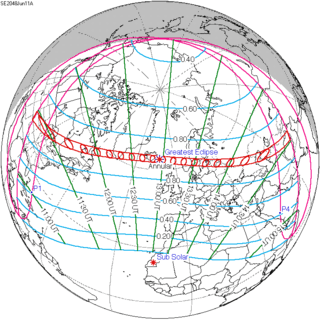 June 11, 2048 |
| 61 | 62 | 63 |
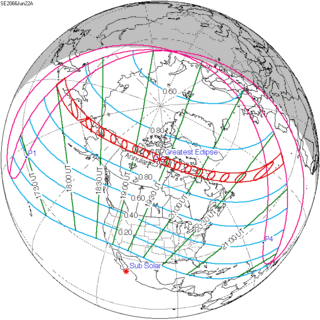 June 22, 2066 |
 July 3, 2084 |
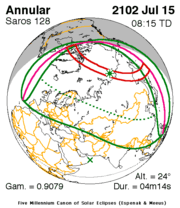 July 15, 2102 |
| 64 | 65 | 66 |
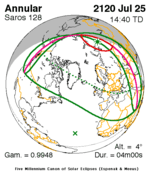 July 25, 2120 |
August 5, 2138 (Partial) | August 16, 2156 (Partial) |
| 67 | 68 | |
| August 27, 2174 (Partial) | September 6, 2192 (Partial) | |
Notes
- van Gent, R.H. "Solar- and Lunar-Eclipse Predictions from Antiquity to the Present". A Catalogue of Eclipse Cycles. Utrecht University. Retrieved 6 October 2018.
References
- Earth visibility chart and eclipse statistics Eclipse Predictions by Fred Espenak, NASA/GSFC
.jpg)
